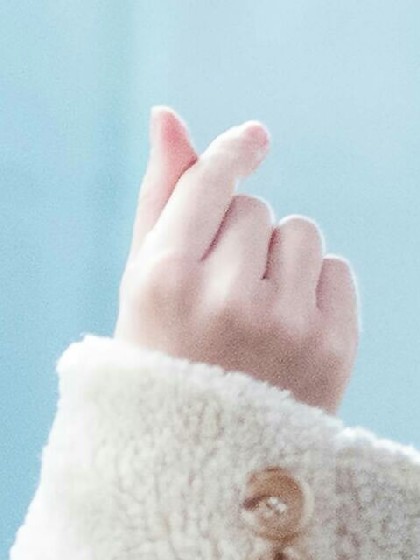Part 15 如何建立创造力和自信心?
你的学校或者工作场所是不是把人分为创造型和现实型?然而,David确信创造力可不是少数人的专利。从他传奇的设计事业和个人生活中,他展示了建立创造力自信心的方法。
中英文对照演讲稿
I wanted to talk to you today about creative confidence.I'm going to start way back in the third grade at Oakdale School in Barberton Ohio.I remember one day my best friend Brian was working on a project.He was making a horse out of the clay that our teacher kept under the sink.
今天我想讲一讲关于创造力自信心的问题。最开始我要追溯到我还在俄亥俄州巴伯顿的欧克代尔学校上三年级的时候,记得有一天,我最好的朋友布莱恩正在做手工,他在用老师放在水池下的陶土做一匹马。
And at one point one of the girls who was sitting at his tableseeing what he was doingleaned over and said to him "That's terrible. That doesn't look anything like a horse." And Brian's shoulders sank.And he wadded up the clay horse and he threw it back in the bin.I never saw Brian do a project like that ever again.
忽然,跟他同桌的一个女孩儿,看到他在做的东西。靠过来说道“真差劲。那看起来一点儿也不像马”,布莱恩的肩膀懈下来,把陶土小马捏成一团,扔进了垃圾箱。之后我再也没见过布莱恩做类似的手工了。
And I wonder how often that happens.It seems like when I tell that story of Brian to my classa lot of them want to come up after class and tell me about their similar experiencehow a teacher shut them down or how a student was particularly cruel to them.And some opt out thinking of themselves as creative at that point.And I see that opting out that happens in childhoodand it moves in and becomes more ingrainedeven by the time you get to adult life.
我想知道这种事有多普遍,当我对学生们讲布莱恩的故事时,似乎有很多人想在课后留下来,告诉了我他们自己类似的经历。老师如何贬低他们、同学如何不留情面,其中一些人从此再也不相信,自己是有创意的人。我发现这种童年时的改变,会变得越来越深刻,甚至直至成年。所以我们看到很多这样的例子。
So we see a lot of this.When we have a work shop or when we have clients in to work with us side-by-sideeventually we get to the point in the process that's fuzzy or unconventional.And eventually these big shot executives whip out their Blackberries and they say they have to make really important phone callsand they head for the exits.And they're just so uncomfortable.
当我们办讲座或是与客户在一起工作的时候,最终我们会进入一个环节,一个模糊的、非常规的环节。最终,这些高层经理会抽出他们的黑莓手机,说他们必须打几个非常重要的电话,然后就走出了房间。他们感到极不舒服。
When we track them down and ask them what's going onthey say something like "I'm just not the creative type." But we know that's not true. If they stick with the process if they stick with itthey end up doing amazing things and they surprise themselves just how innovative they and their teams really are.So I've been looking at this fear of judgment that we have.That you don't do things you're afraid you're going to be judged.If you don't say the right creative thing you're going to be judged.
当我们跟踪调查,问他们到底是怎么回事,他们回答道:“我真不是创造型的人”。我们知道事实并非如此,如果他们坚持到底,就会取得非常惊人的成果。然后他们会感到非常惊奇,自己和所在团队是多么有创意,所以我一直在研究这种评价恐惧症。你不去做一件事,因为你害怕被评价,如果你说不出正确的有创造性的想法,就会被品头论足。
And I had a major breakthrough when I met the psychologist Albert Bandura.I don't know if you know Albert Bandura. But if you go to Wikipedia it says that he's the fourth most important psychologist in history -- like Freud Skinner somebody and Bandura. Bandura's 86 and he still works at Stanford.
我的主要突破发生在,我遇到心理学家艾伯特.班杜拉(Albert Bandura)之后,不知你们了不了解艾伯特.班杜拉。但如果你们查查维基百科,上面写着他是历史上最重要的心理学家第四名。
And he's just a lovely guy.And so I went to see him because he has just worked on phobias for a long time which I'm very interested in. He had developed this way this kind of methodologythat ended up curing people in a very short amount of time.
弗洛伊德、斯金纳、某某和班杜拉,班杜拉已经86岁了,还在斯坦福任职。他是一个友善的人。 我去拜访他,因他在恐惧症领域有多年经验,而我对此很感兴趣。他开发出一种方法能在短时间内治好各种恐惧症。
In four hours he had a huge cure rate of people who had phobias. And we talked about snakes. I don't know why we talked about snakes. We talked about snakes and fear of snakes as a phobia. And it was really enjoyable really interesting. He told me that he'd invite the test subject in and he'd say "You know there's a snake in the next room and we're going to go in there." To which he reported most of them replied "Hell no I'm not going in therecertainly if there's a snake in there."
在四小时的治疗时间里,治愈率相当高。我们谈到了,不过我们就谈到了蛇,以及人对蛇的恐惧,谈话令人愉悦,非常有趣。他告诉我他邀请受试者进入房间,对他们说:“隔壁房间有一条蛇,我们要走进去”多数受试者回答“天哪,不!我肯定不会进去的!有蛇在那儿”。
But Bandura has a step-by-step process that was super successful. So he'd take people to this two-way mirror looking into the room where the snake was and he'd get them comfortable with that. And then through a series of steps he'd move them and they'd be standing in the door way with the door open and they'd be looking in there.
班杜拉有一套极为成功的步骤。首先他把受试者带到双面镜前,观察蛇在房间里的动向,让人们逐渐适应。然后经过一系列步骤,受试者被带到打开的房间门口站着,往里面看,并逐渐适应。
And he'd get them comfortable with that. And then many more steps later baby steps they'd be in the room they'd have a leather glove like a welder's glove onand they'd eventually touch the snake. And when they touched the snake everything was fine. They were cured. In fact everything was better than fine. These people who had life-long fears of snakes were saying things like"Look how beautiful that snake is."And they were holding it in their laps. Bandura calls this process "guided mastery." I love that term: guided mastery.
之后还有许多循序渐进的步骤,他们进入房间,带着焊工那种皮手套,触摸蛇。当他们摸到蛇的时候,事实上,结果比这更好,这些生来对蛇恐惧的人,说道“看那条蛇多漂亮”。他们可以把蛇放在膝盖上,班杜拉称之为“引导性掌控”,我喜欢这个术语:“引导性掌控”。
And something else happened these people who went through the process and touched the snake ended up having less anxiety about other things in their lives. They tried harder they persevered longer and they were more resilient in the face of failure. They just gained a new confidence. And Bandura calls that confidence self-efficacy -- the sense that you can change the world and that you can attain what you set out to do.
其他的事发生了,在这些人经历所有程序最后触摸到蛇后,他们对生活中其他事情的焦虑也都减轻了,他们更努力,更坚持,在失败面前表现得更有韧性。他们获得了一种新的自信,班杜拉称这种自信为自我效能。一种你能改变世界的感觉,你能达成自己目标的感觉。
Well meeting Bandura was really cathartic for me because I realized that this famous scientist had documented and scientifically validated something that we've seen happen for the last 30 years. That we could take people who had the fear that they weren't creative and we could take them through a series of steps kind of like a series of small successes and they turn fear into familiarity and they surprise themselves. That transformation is amazing.
与班杜拉的会见对我意义非凡,因为我认识到这位著名的科学家。有文献和科学证据来证明,我们过去三十年所见证的事情,证明了我们可以带领那些惧怕自己没有创造力的人们,通过一系列步骤,一系列小小的成功,把惧怕成为熟悉,让他们给自己带来惊喜,这种转变是惊人的。
We see it at the d.school all the time. People from all different kinds of disciplines they think of themselves as only analytical. And they come in and they go through the process our process they build confidence and now they think of themselves differently. And they're totally emotionally excited about the fact that they walk around thinking of themselves as a creative person. So I thought one of the things I'd do today is take you through and show you what this journey looks like.
我们不断在斯坦福设计学院(d.school)看到,不同学科的人们,他们认为自己只是善于分析。他们来我们这儿,经历我们开发的流程,树立自信,对自己产生新的看法。他们会非常的激动,因为他们从此之后,会认为自己是有创造力的人。我认为我今天的任务之一,就是向你们展示这个过程是怎样的。
To me that journey looks like Doug Dietz. Doug Dietz is a technical person. He designs medical imaging equipment large medical imaging equipment. He's worked for GE and he's had a fantastic career. But at one point he had a moment of crisis. He was in the hospital looking at one of his MRI machines in use when he saw a young family. There was a little girl and that little girl was crying and was terrified.
对于我来说,演示这个过程最好的例子就是道格.迪兹(Doug Dietz),道格.迪兹是个技术型人才。他设计医用成像设备,大型的医用成像设备。他为通用电气(GE)工作,有非常成功的事业过他也曾有危机时刻。他在医院里观察他的核磁共振仪器的实际使用,他看到一个年轻的家庭那家的小女孩,被吓哭了。
And Doug was really disappointed to learn that nearly 80 percent of the pediatric patients in this hospital had to be sedated in order to deal with his MRI machine. And this was really disappointing to Doug because before this time he was proud of what he did. He was saving lives with this machine. But it really hurt him to see the fear that this machine caused in kids.
道格心情沮丧地发现,医院里将近80%的儿科患者,需要服用镇静剂才能做核磁共振。因为这之前他一直为自己的工作感到骄傲 这令道格大为受挫,他觉得自己的这台机器能拯救生命,然而事实给了他很大打击 这台机器给孩子们带来的是恐惧。
About that time he was at the d.school at Stanford taking classes. He was learning about our process about design thinking about empathy about iterative prototyping.And he would take this new knowledge and do something quite extraordinary. He would redesign the entire experience of being scanned. And this is what he came up with.
就在那时,他正在斯坦福设计学院学习,他知道了我们的流程,关于设计性思维,同情心,以及迭代的原型设计。他运用了这些新知识,做出了非凡的成果。他重新设计了扫描检查的全部体验,这就是他的成果。
He turned it into an adventure for the kids. He painted the walls and he painted the machine and he got the operators retrained by people who know kids like children's museum people. And now when the kid comes it's an experience. And they talk to them about the noise and the movement of the ship. And when they come they say "Okay you're going to go into the pirate ship but be very still because we don't want the pirates to find you."
他把核磁共振检查变成了孩子们的大冒险,他在墙上和机器上画上图案,他请懂孩子的人对医务人员重新培训。比如说儿童博物馆的工作人员,对孩子们来说这是一次独特体验。他们对孩子们解释噪音和检查舱的运行,他们对来检查的孩子说“好了,你现在要潜入这艘海盗船别乱动,不然海盗会发现你的” 。
And the results were super dramatic. So from something like 80 percent of the kids needing to be sedated to something like 10 percent of the kids needing to be sedated. And the hospital and GE were happy too. Because you didn't have to call the anesthesiologist all the time they could put more kids through the machine in a day. So the quantitative results were great. But Doug's results that he cared about were much more qualitative.
结果是戏剧化的。需要服用镇静剂的孩子从80%降到了10%。医院和通用电气公司对此都很高兴,他们不用一直找麻醉师了。每天可以做的检查数量增加了,这个定量结果十分显著,但道格真正在乎的是定性结论。
He was with one of the mothers waiting for her child to come out of the scan. And when the little girl came out of her scan she ran up to her mother and said "Mommy can we come back tomorrow?"
他陪同一位母亲,等待她的孩子完成检查,当小女孩做完了检查,她跑到妈妈那儿说“妈妈,我们明天还能来吗?”
And so I've heard Doug tell the story many times of his personal transformation and the breakthrough design that happened from it but I've never really seen him tell the story of the little girl without a tear in his eye. Doug's story takes place in a hospital. I know a thing or two about hospitals.
我不止一次听道格讲起这个故事,这个故事关于他个人的转变,和由此而来的突破性设计。但每一次他讲到那个小女孩的故事,他都会眼含泪水,道格的故事发生在医院里。我恰巧对医院略知一二。
A few years ago I felt a lump on the side of my neck and it was my turn in the MRI machine. It was cancer. It was the bad kind. I was told I had a 40 percent chance of survival. So while you're sitting around with the other patients in your pajamas and everybody's pale and thin and you're waiting for your turn to get the gamma rays you think of a lot of things. Mostly you think about Am I going to survive?
几年前我感觉自己的脖子侧面长了一个肿块,于是轮到我去做核磁共振了,是肿瘤。恶性的。我被告知只有40%的存活率,当我坐在一群穿着病号服的病患中间。所有人看起来都苍白瘦弱,等着轮到自己做放疗的那些时间里,会想到很多事。多数时间是想“我能活下来吗?”
And I thought a lot about What was my daughter's life going to be like without me? But you think about other things. I thought a lot about What was I put on Earth to do? What was my calling? What should I do? And I was lucky because I had lots of options. We'd been working in health and wellness and K through 12 and the Developing World.
我也无数次想到,要是我不在了,我女儿会怎样?我也想到很多别的事情。我经常想:我来到世上究竟要做什么?我的使命是什么?我应该做什么?我很幸运,因为有很多选择,我们一直从事医疗福利领域的工作,为K through 12项目工作,为第三世界工作。
And so there were lots of projects that I could work on. But I decided and I committed to at this point to the thing I most wanted to do -- was to help as many people as possible regain the creative confidence they lost along their way. And if I was going to survive that's what I wanted to do. I survived just so you know.
我能做的项目有很多,但在那时我决定要投身于我最想做的工作。那就是去帮助尽可能多的人,让他们重新获得成长过程中丢失的创造力自信心。如果我活下来,我就去做这件事,我活下来了,如你们所见。
I really believe that when people gain this confidence -- and we see it all the time at the d.school and at IDEO -- they actually start working on the things that are really important in their lives. We see people quit what they're doing and go in new directions. We see them come up with more interesting and just more ideas so they can choose from better ideas. And they just make better decisions. So I know at TED you're supposed to have a change-the-world kind of thing. Everybody has a change-the-world thing.
我坚信,当人们获得这种自信。正如我们一直以来在斯坦福设计学院和IDEO公司看到的。人们就会开始研究生命中真正重要的东西,一些人辞掉当下的工作,开辟了新的方向,他们有了更多有趣的想法,这让他们能从更好的想法中作出抉择,从而做出更好的抉择。我知道在TED应该有种改变世界的精神,每个人都有这种改变世界的精神。
If there is one for me this is it. To help this happen. So I hope you'll join me on my quest -- you as thought leaders. It would be really great if you didn't let people divide the world into the creatives and the non-creatives like it's some God-given thing and to have people realize that they're naturally creative. And those natural people should let their ideas fly. That they should achieve what Bandura calls self-efficacy that you can do what you set out to do and that you can reach a place of creative confidence and touch the snake.
对于我来说,就是让这一切发生,我希望诸位能加入我的探索。作为思想的领袖,这是一件伟大的事:不让人们把世界上的人,分成有创意和没创意两种,好像创造力是上天恩赐似的,而是让人们意识到他们天生是有创造力的,而且人们应该为自己的创意插上现实的翅膀。这样他们就会成就班杜拉所说的“自我效能”。你能够达到自己的目标,你可以拥有创造力自信心,然后去触碰蛇,谢谢各位。
演讲者:大卫•凯利
励志赏析提示您:看后求收藏(笔尖小说网http://www.bjxsw.cc),接着再看更方便。
相关小说
- 偶练之我是导师?!
- 简介:emmm……其实我现在还很纠结女主施薇薇皮相到底应该是谁……中意的人选有:李智恩,林允儿,迪丽热巴,郑爽,赵丽颖,吴倩,郑秀晶……啊啊啊!好纠结!
- 4.0万字6年前
- 霍雨浩去魏无羡的世界
- 简介:霍雨浩当上了魏无羡的亲妹妹,会怎么样,被自己的好朋友背叛,去了另个世界
- 6.7万字5年前
- 柠檬封面铺
- 简介:〔Fairy工作室〕“似此星辰非昨夜,为谁风露立中宵”〈长卿阁.〉[我醉欲眠卿可去,明朝有意抱琴来].<听风阁>聆听风的声音,奏响我的乐章.招美工,有意者加QQ1498089937答案:蓝海猖狂,护凯为王。.封面:韩祺柠
- 0.1万字5年前
- 我们的活力校园
- 暂无介绍哦~
- 2.7万字5年前
- 王默的复仇之路
- 简介:王默是谁?不喜欢王默的请出去,我这里不欢迎你!
- 2.3万字5年前
- 青春一场多变的梦
- 暂无介绍哦~
- 0.1万字5年前





